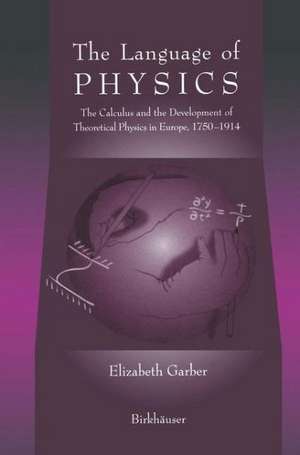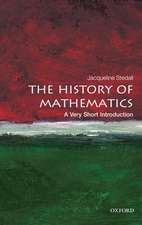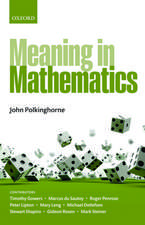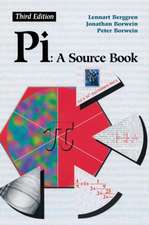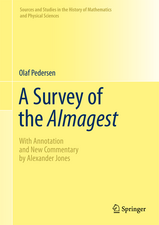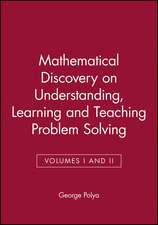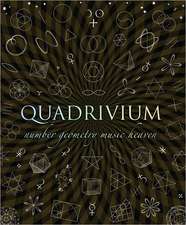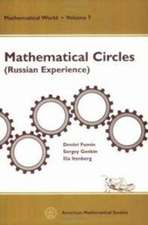The Language of Physics: The Calculus and the Development of Theoretical Physics in Europe, 1750–1914
Autor Elizabeth Garberen Limba Engleză Paperback – 10 oct 2012
| Toate formatele și edițiile | Preț | Express |
|---|---|---|
| Paperback (1) | 646.75 lei 6-8 săpt. | |
| Birkhäuser Boston – 10 oct 2012 | 646.75 lei 6-8 săpt. | |
| Hardback (1) | 652.81 lei 6-8 săpt. | |
| Birkhäuser Boston – dec 1998 | 652.81 lei 6-8 săpt. |
Preț: 646.75 lei
Preț vechi: 760.88 lei
-15% Nou
Puncte Express: 970
Preț estimativ în valută:
123.75€ • 129.22$ • 102.19£
123.75€ • 129.22$ • 102.19£
Carte tipărită la comandă
Livrare economică 15-29 aprilie
Preluare comenzi: 021 569.72.76
Specificații
ISBN-13: 9781461272724
ISBN-10: 1461272726
Pagini: 426
Ilustrații: XIX, 399 p.
Dimensiuni: 155 x 235 x 25 mm
Greutate: 0.59 kg
Ediția:1999
Editura: Birkhäuser Boston
Colecția Birkhäuser
Locul publicării:Boston, MA, United States
ISBN-10: 1461272726
Pagini: 426
Ilustrații: XIX, 399 p.
Dimensiuni: 155 x 235 x 25 mm
Greutate: 0.59 kg
Ediția:1999
Editura: Birkhäuser Boston
Colecția Birkhäuser
Locul publicării:Boston, MA, United States
Public țintă
ResearchCuprins
I: Introduction.- Mathematics and Modern Physics.- Modern Physics.- Earlier Historical Approaches to Modern Physics.- Mathematics as Language.- Organization of the Text.- I: Eighteenth-Century Science.- II: Vibrating Strings and Eighteenth-Century Mechanics.- III: Eighteenth-Century Physics and Mathematics: A Reassessment.- II: Transitions, 1790–1830.- IV: “Empirical Literalism”: Mathematical Versus Experimental Physics in France, 1790–1830.- V: On the Margins: Experimental Physics and Mathematics in the German States, 1790–1830.- VI: On the Margins: Experimental Philosophy and Mathematics in Britain, 1790–1830.- III: Transformations, 1830–1870.- VII: From Natural Philosophy and “Mixed Mathematics” to Theoretical and Experimental Physics: Britain, 1830–1870.- VIII: Physics and Mathematics in the German States, 1830–1870.- IV: Conclusions and Epilogue.- IX: Physics About 1870 and the “Decline” of French Physics.- X: Epilogue: Forging New Relationships: 1870–1914.
Recenzii
"Garber discusses an interesting part of scientific development, using examples of theoretical physics and their historical steps."
---Mathematical Reviews
"Garber argues her case convincingly... A very valuable addition to the existing literature on the history of modern physics. The book is also well written... Those who make an effort to follow the argument will gain many new insights and obtain a fresh outlook at the mathematization of physics in the 18th and 19th centuries."
---Physics World
---Mathematical Reviews
"Garber argues her case convincingly... A very valuable addition to the existing literature on the history of modern physics. The book is also well written... Those who make an effort to follow the argument will gain many new insights and obtain a fresh outlook at the mathematization of physics in the 18th and 19th centuries."
---Physics World
Textul de pe ultima copertă
This work is the first explicit examination of the key role that mathematics has played in the development of theoretical physics and will undoubtedly challenge the more conventional accounts of its historical development. Although mathematics has long been regarded as the "language" of physics, the connections between these independent disciplines have been far more complex and intimate than previous narratives have shown.
This study encompasses engagements across discipline boundaries and many nations rom the ear of Euler and Bernoulli o that of Hilbert and Einstein. At all times physicists and mathematicians retained their distinct sets of disciplinary standards and goals. Interactions within historical ears are handled using the standards of the time to define mathematics and physics. In this context, the works of Lagrange, Laplace, Fourier, Jacobi, William Thomson, Maxwell, Helmholtz, and many others are discussed, and by 1870, it is evident that the essentials of modern theoretical physics are in place. The epilogue, spanning the decades from 1870 to the First World War, deals with the decline of these interactions and the building of new connections. It is particularly significant that these new patterns of interactions became paradigmatic for the rest of the twentieth century.
The unique perspectives concerning the history of theoretical physics will undoubtedly cause some raised eyebrows, as the author convincingly demonstrates that practices, methods, and language shaped the development of the field, and are a key to understanding the mergence of the modern academic discipline. Mathematicians and physicists, as well as historians of both disciplines, will find this provocative work of great interest.
This study encompasses engagements across discipline boundaries and many nations rom the ear of Euler and Bernoulli o that of Hilbert and Einstein. At all times physicists and mathematicians retained their distinct sets of disciplinary standards and goals. Interactions within historical ears are handled using the standards of the time to define mathematics and physics. In this context, the works of Lagrange, Laplace, Fourier, Jacobi, William Thomson, Maxwell, Helmholtz, and many others are discussed, and by 1870, it is evident that the essentials of modern theoretical physics are in place. The epilogue, spanning the decades from 1870 to the First World War, deals with the decline of these interactions and the building of new connections. It is particularly significant that these new patterns of interactions became paradigmatic for the rest of the twentieth century.
The unique perspectives concerning the history of theoretical physics will undoubtedly cause some raised eyebrows, as the author convincingly demonstrates that practices, methods, and language shaped the development of the field, and are a key to understanding the mergence of the modern academic discipline. Mathematicians and physicists, as well as historians of both disciplines, will find this provocative work of great interest.
